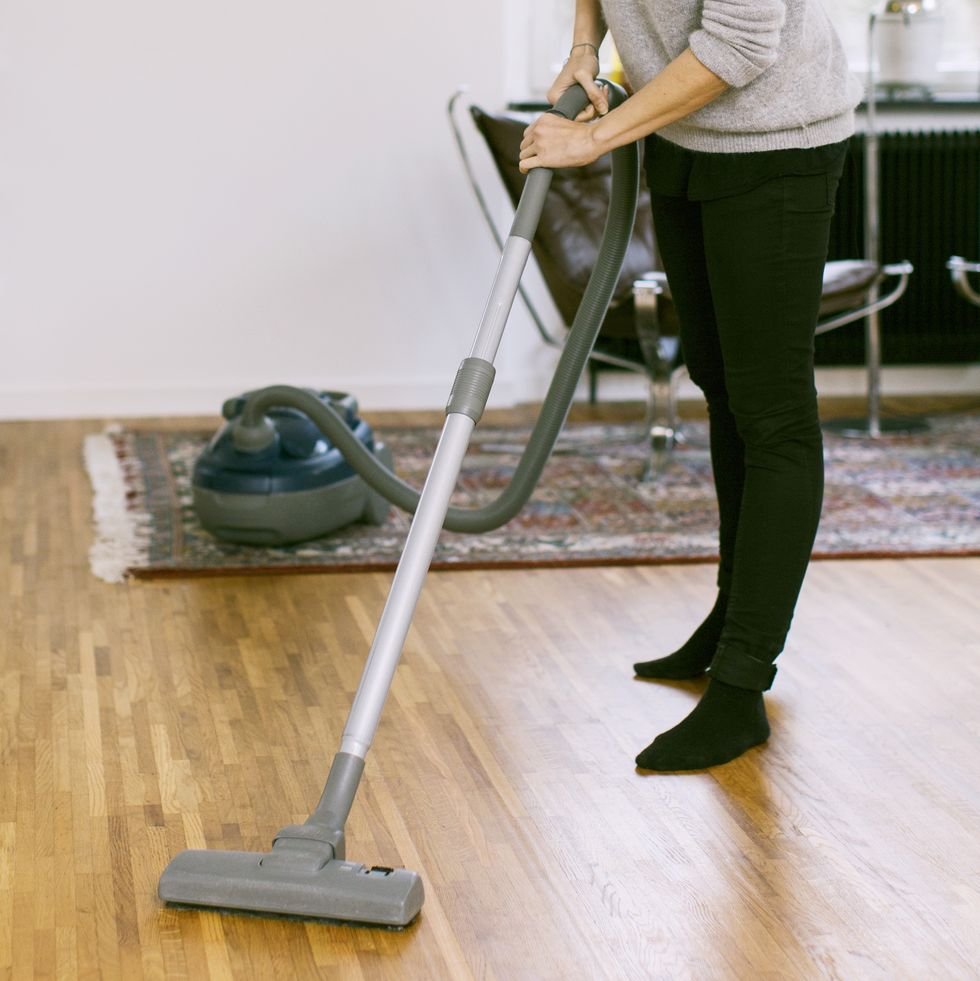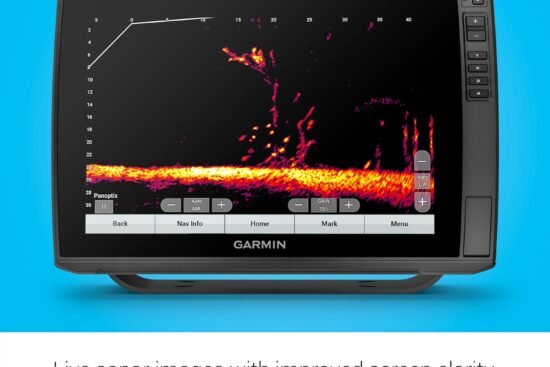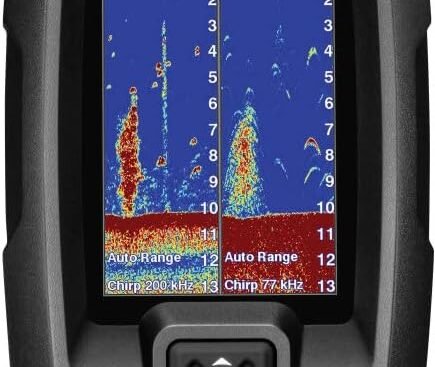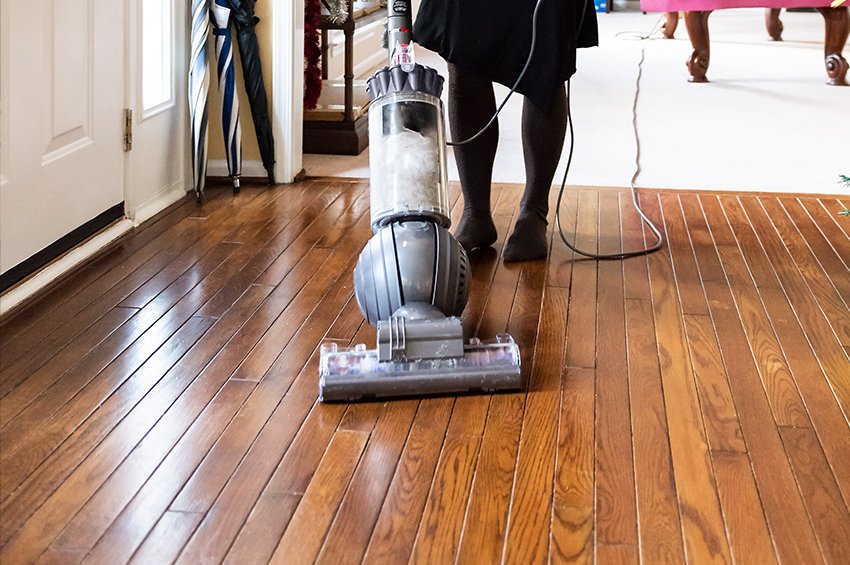
So, you’ve invested in stunning hardwood flooring and you want to make sure it stays in top-notch condition for years to come. Well, my friend, I’ve got some good news for you – the key to maintaining hardwood floors is right in your hands; it’s your trusty vacuum! But here’s the catch – you need to know how to use it properly to avoid any damage. In this article, we’ll walk you through some essential tips and tricks on how to vacuum your hardwood floors like a pro, ensuring they remain as beautiful as ever without a scratch or scuff in sight. So, let’s get ready to give your floors the TLC they deserve!
1. Choosing the Right Vacuum for Hardwood Flooring
When it comes to maintaining hardwood flooring, choosing the right vacuum is crucial. You want a vacuum that is specifically designed for hardwood floors and has features that will protect the delicate surface. Here are some factors to consider when selecting a vacuum for hardwood flooring:
1.1 Consider a vacuum with a good suction power
One of the most important features to look for in a vacuum for hardwood flooring is strong suction power. Hardwood floors tend to collect loose dirt, debris, and even pet hair, so a vacuum with good suction will ensure a thorough clean. Make sure to check the specifications of the vacuum and look for one with high suction power.
1.2 Look for a vacuum with an adjustable height setting
Hardwood floors come in different heights, and you want a vacuum that can be adjusted accordingly. Look for a vacuum that has an adjustable height setting, so you can easily switch between different floor types without causing any damage to your hardwood flooring.
1.3 Consider a vacuum with rubber wheels to prevent scratches
Rubber wheels are ideal for hardwood flooring because they are gentle and won’t leave any scratches or marks. When choosing a vacuum, make sure it has rubber wheels to protect your hardwood floors. This way, you can confidently vacuum without worrying about causing any damage.
1.4 Opt for a vacuum with a soft brush attachment
A soft brush attachment is another important feature to consider when choosing a vacuum for hardwood flooring. This attachment is designed to be gentle on the surface of the floor while effectively picking up dirt and debris. It will allow you to clean your hardwood floors without scratching or damaging them.
1.5 Take into account the noise level of the vacuum
The noise level of a vacuum can be a significant factor, especially if you have hardwood flooring in an area where noise might be an issue, such as bedrooms or offices. Look for a vacuum that has a quiet operation so that you can maintain your hardwood floors without disturbing the peace and quiet of your home or workplace.
2. Preparing Your Hardwood Flooring Before Vacuuming
Before you start vacuuming your hardwood floors, it’s essential to prepare them properly. This will ensure that you get the best results from your vacuuming and prevent any unnecessary damage to the floor. Follow these steps to prepare your hardwood flooring before vacuuming:
2.1 Remove loose dirt and debris
Start by removing any loose dirt and debris from the hardwood floor. You can do this by using a broom or a dustpan and brush. This step will prevent your vacuum from becoming clogged or overwhelmed with large particles, making the vacuuming process more effective.
2.2 Sweep or dust mop the floor
Once you have removed the larger particles, sweep or dust mop the hardwood floor to eliminate any remaining dirt or dust. This step will help ensure that your vacuum can focus on the smaller particles that can get trapped in the cracks and crevices of your hardwood flooring.
2.3 Check for any loose or protruding nails
Before vacuuming, it’s important to inspect your hardwood flooring for any loose or protruding nails. These can pose a risk to both you and your vacuum, as they can cause damage or become stuck in the vacuum’s brushes. Hammer down any nails that are sticking out to create a smooth surface for vacuuming.
2.4 Clear the area of small objects or obstacles
Before you start vacuuming, remove any small objects or obstacles from the area. This includes toys, shoes, or any other items that could potentially get caught in the vacuum or cause damage to the hardwood flooring. Clearing the area will not only make the vacuuming process easier but also help avoid any accidents or mishaps.
2.5 Consider using a hardwood floor cleaner for a deeper clean
For a deeper clean, you may consider using a hardwood floor cleaner before vacuuming. These cleaners are specifically formulated to remove dirt, grime, and stains from hardwood flooring without causing any damage. Follow the instructions on the cleaner and allow the floor to dry completely before proceeding with the vacuuming process.
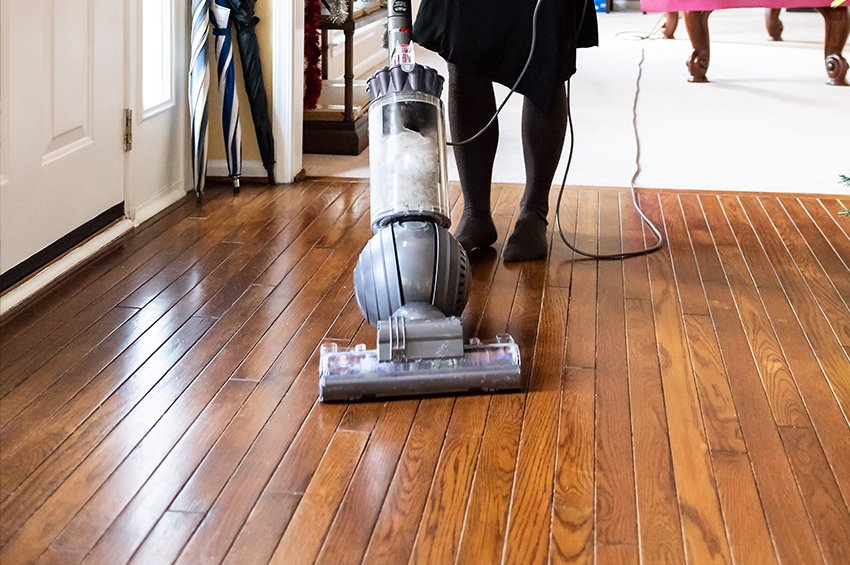
3. Adjusting the Vacuum Settings for Hardwood Flooring
Once your hardwood flooring is prepared, it’s time to adjust your vacuum settings to ensure proper cleaning without causing any damage. Here are some important adjustments to consider:
3.1 Set the vacuum to the appropriate height
Before you start vacuuming, make sure to adjust the height setting on your vacuum to match the height of your hardwood flooring. Setting it too high can result in ineffective cleaning, while setting it too low can cause damage. Pay attention to the manufacturer’s recommendations and adjust the height accordingly.
3.2 Use the proper attachment for hardwood floors
Many vacuums come with different attachments that are designed for specific purposes. When vacuuming hardwood floors, make sure to use the attachment specifically designed for this type of flooring. Usually, this will be a soft brush attachment that is gentle on the surface.
3.3 Adjust the suction power as needed
Depending on the amount of dirt and debris on your hardwood flooring, you may need to adjust the suction power of your vacuum. If the suction is too strong, it may cause the vacuum to stick to the floor or create marks. If it’s not strong enough, it won’t effectively pick up all the dirt and debris. Find the right balance by adjusting the suction power as needed.
3.4 Avoid using rotating brushes directly on the floor
Rotating brushes can be useful for cleaning certain types of flooring, but they can cause damage to hardwood floors. Avoid using rotating brushes directly on the floor, as they can leave scratches or marks. Stick to the soft brush attachment mentioned earlier, which is specifically designed for hardwood flooring.
3.5 Consider using a vacuum with a microfiber pad attachment
Some vacuums come with a microfiber pad attachment that can be used in addition to the soft brush attachment. This attachment helps to further remove dirt and add an extra level of protection to your hardwood floors. Consider using a vacuum with this attachment for even better results.
4. Vacuuming Techniques for Hardwood Flooring
Now that you have adjusted the vacuum settings, it’s time to start vacuuming your hardwood floors. By using the right techniques, you can ensure a thorough clean without causing any damage. Follow these vacuuming techniques for hardwood flooring:
4.1 Start from the farthest corner of the room
When vacuuming your hardwood floors, it’s best to start from the farthest corner of the room and work your way towards the exit. This will prevent you from stepping on the freshly vacuumed areas and ensure that you cover the entire floor.
4.2 Use slow and deliberate passes
To effectively clean the hardwood floors, use slow and deliberate passes with the vacuum. Rushing through the process can result in missed spots or ineffective cleaning. Take your time and make sure to cover every inch of the floor.
4.3 Move the vacuum in the direction of the grain
When vacuuming hardwood floors, it’s important to move the vacuum in the direction of the wood grain. This will prevent any damage or scratches to the floor and ensure that the vacuum’s brushes are moving in the right direction to pick up dirt and debris.
4.4 Overlap each pass slightly to ensure thorough cleaning
To ensure thorough cleaning, make sure to overlap each pass slightly with the vacuum. This will help pick up any dirt or debris that may have been missed during the previous pass. Overlapping ensures that you cover the entire floor surface.
4.5 Pay attention to corners and edges
Don’t forget to pay special attention to corners and edges when vacuuming your hardwood floors. These areas tend to collect more dirt and debris, so make sure to spend some extra time cleaning them. Use the appropriate attachments or maneuver the vacuum carefully to reach all the hard-to-reach areas.

5. Regular Maintenance Tips for Hardwood Flooring
To keep your hardwood flooring looking its best, regular maintenance is key. Here are some tips to help you maintain your hardwood floors beyond just the vacuuming process:
5.1 Empty the vacuum’s dustbin or bag regularly
As you vacuum your hardwood floors, you will be collecting dirt, dust, and debris in your vacuum’s dustbin or bag. Make sure to empty it regularly to prevent the buildup of dirt and to ensure the vacuum’s continued performance. Check the manufacturer’s instructions for guidance on how often to empty the dustbin or change the bag.
5.2 Clean the vacuum’s filter as recommended by the manufacturer
The filter in your vacuum plays a crucial role in trapping dust and allergens. Over time, the filter can become clogged and less effective. Refer to the manufacturer’s instructions on how to clean or replace the filter to maintain optimal performance. Regularly cleaning or replacing the filter will help ensure that your vacuum is picking up as much dirt as possible.
5.3 Check for any loose screws or parts on the vacuum
Regularly inspect your vacuum for any loose screws, parts, or other signs of wear and tear. Tighten any loose screws or bolts and replace any worn-out or damaged parts. Maintaining your vacuum in good working condition will not only improve its performance but also prevent any accidental damage to your hardwood floors.
5.4 Store the vacuum properly to prevent damage
When not in use, it’s important to store your vacuum properly to prevent any damage to the unit or your hardwood floors. Make sure to follow the manufacturer’s instructions for storage and find a safe and dry place to keep your vacuum. This will help prolong its lifespan and ensure that it’s always ready for use.
5.5 Schedule professional deep cleanings for your hardwood floors
While regular vacuuming is crucial for maintaining hardwood flooring, it’s also important to schedule professional deep cleanings periodically. Professional cleaners have the expertise and specialized equipment to effectively remove deep-seated dirt and grime from your hardwood floors. This extra level of cleaning will help keep your floors looking their best and extend their lifespan.
6. Additional Tips for Vacuuming Hardwood Flooring
In addition to the previous sections, here are some additional tips and considerations to keep in mind when vacuuming your hardwood flooring:
6.1 Use a vacuum with a HEPA filter to minimize allergens
If you or anyone in your household suffers from allergies, consider using a vacuum with a HEPA filter. HEPA filters are designed to trap allergens and airborne particles, providing cleaner air and reducing the presence of allergens in your home.
6.2 Consider using a canister vacuum for easier maneuverability
Canister vacuums are often a popular choice for hardwood flooring due to their maneuverability and versatility. The separate canister, which holds the motor and dustbin, allows for greater ease in moving around furniture and reaching difficult areas, such as under tables and chairs.
6.3 Avoid using any steam or wet vacuums on hardwood floors
Steam and wet vacuums are not suitable for hardwood flooring as excess moisture can damage the wood. Hardwood floors are not designed to withstand excessive water or steam. Stick to dry vacuuming methods to ensure the longevity of your hardwood floors.
6.4 Use a soft-bristled broom or a dust mop for light cleaning
For light cleaning in between vacuuming sessions, consider using a soft-bristled broom or a dust mop. These tools are gentle on the floor and can effectively remove surface dirt and debris. They can be especially useful for quick touch-ups or for areas that may require extra attention.
6.5 Regularly inspect the vacuum’s wheels for any debris or dirt
The wheels of your vacuum can collect dirt, debris, and even hair over time. Regularly inspect the wheels and clean them if necessary. Clean wheels will ensure smooth operation and prevent any scratching or damage to your hardwood floors.
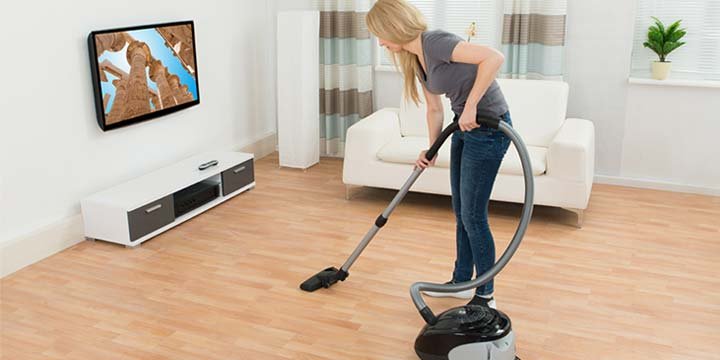
7. Common Mistakes to Avoid When Vacuuming Hardwood Flooring
When vacuuming your hardwood floors, it’s important to be aware of common mistakes that can lead to damage or ineffective cleaning. Avoid these mistakes to keep your hardwood floors in top condition:
7.1 Using vacuums with spinning brushes on hardwood
Vacuums with spinning brushes are designed for carpets and can cause damage to hardwood floors. Avoid using such vacuums on hardwood flooring, as the spinning brushes can leave scratches or marks.
7.2 Using vacuums with worn-out or damaged wheels
Make sure to regularly inspect the wheels of your vacuum and replace them if they are worn out or damaged. Using a vacuum with worn-out wheels can lead to scratching or damage to your hardwood floors.
7.3 Neglecting to clean the vacuum’s beater brush or roller
If your vacuum has a beater brush or roller, make sure to clean it regularly. Dirt, hair, and debris can get tangled in the brush or roller, causing it to become less effective and potentially damaging your hardwood floors.
7.4 Using excessive force or pressure while vacuuming
Avoid using excessive force or pressure when vacuuming your hardwood floors. Pressing too hard can damage the surface of the wood and leave marks or scratches. Let the vacuum do the work and use gentle, even strokes.
7.5 Neglecting to empty the vacuum’s dustbin or bag
Regularly emptying the dustbin or changing the bag of your vacuum is essential for maintaining its performance and ensuring effective cleaning. Neglecting to do so can lead to reduced suction power and inefficient cleaning.
8. Addressing Potential Damage from Vacuums on Hardwood Flooring
Even with proper care, there may be instances where your vacuum causes damage to your hardwood flooring. Here are some steps you can take to address potential damage:
8.1 Fixing scratches or scuff marks caused by the vacuum
If your vacuum leaves scratches or scuff marks on your hardwood floors, there are steps you can take to fix them. For minor scratches, you can try using a wood filler that matches the color of your floor. Apply the filler to the affected area, let it dry, and gently sand it down until it is smooth. For deeper scratches, it may be best to consult a professional for repair.
8.2 Treating deeper gouges or indentations on the floor
Deeper gouges or indentations in your hardwood flooring may require more extensive repair. Consult a professional who specializes in hardwood floor repairs to assess the damage and recommend the best course of action. They may be able to fill the indentations or consider more extensive repair options, such as sanding and refinishing.
8.3 Consulting a professional for extensive damage
In cases of extensive damage to your hardwood flooring caused by a vacuum, it’s best to seek professional help. A professional can assess the extent of the damage and provide you with appropriate recommendations for repair or restoration.
8.4 Applying a protective finish to prevent future damage
To prevent future damage to your hardwood floors from vacuuming or other sources, consider applying a protective finish. This can include applying a polyurethane or wax coating to the surface of the wood, creating a protective barrier against scratches and wear.
8.5 Regularly inspecting the floor for any signs of wear or damage
Lastly, regularly inspect your hardwood flooring for any signs of wear, damage, or other issues. Catching problems early on can help prevent further damage and allow for timely repairs. Pay attention to areas that receive the most foot traffic, such as entryways and hallways.
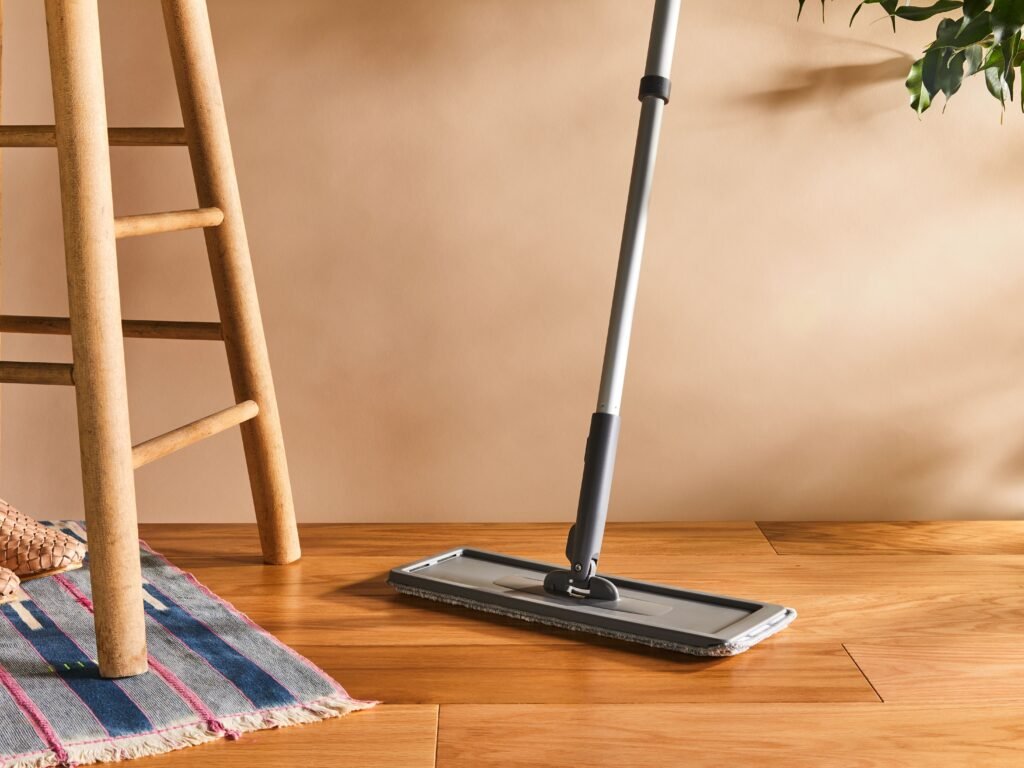
9. Frequently Asked Questions (FAQ) about Vacuuming Hardwood Flooring
Here are answers to some frequently asked questions about vacuuming hardwood flooring:
9.1 Can I use a vacuum with a beater brush on hardwood floors?
It is generally recommended to avoid using a vacuum with a beater brush on hardwood floors. The rotating bristles of a beater brush can cause scratches or marks on the surface of the wood. Stick to vacuums with specialized hardwood floor attachments or soft brush attachments.
9.2 How often should I vacuum my hardwood floors?
The frequency of vacuuming your hardwood floors will depend on factors such as foot traffic and the presence of pets or small children. As a general rule, aim to vacuum at least once a week to remove dirt, dust, and debris.
9.3 Can I vacuum hardwood floors with pet hair?
Yes, you can vacuum hardwood floors to remove pet hair. Look for vacuums with specialized attachments or features designed for picking up pet hair. Regular vacuuming will help prevent pet hair from accumulating and reduce allergens in your home.
9.4 Should I vacuum before or after mopping?
It is generally recommended to vacuum before mopping hardwood floors. Vacuuming first will remove loose dirt and debris, making mopping more effective. Mopping before vacuuming may push dirt or debris into the cracks and crevices of the floor, making it harder to remove.
9.5 Can I use a robot vacuum on hardwood flooring?
Yes, you can use a robot vacuum on hardwood flooring. However, make sure the robot vacuum is specifically designed for hardwood floors and has features such as rubberized wheels and brushes to protect the surface. Regularly inspect and clean the robot vacuum to prevent any accumulation of dirt or debris that could scratch the floor.
10. Conclusion
Proper vacuuming is essential for maintaining the beauty and longevity of your hardwood flooring. By choosing the right vacuum, preparing the floor, adjusting the settings, using proper techniques, and following regular maintenance tips, you can effectively clean your hardwood floors without causing damage.
Remember to choose a vacuum with good suction power and features like adjustable height, rubber wheels, and a soft brush attachment. Prepare your hardwood flooring by removing loose dirt, sweeping or dust mopping, checking for nail protrusions, and clearing the area of small objects. Adjust your vacuum settings to the appropriate height, use the proper attachment, and adjust the suction power. Follow vacuuming techniques like starting from the farthest corner, using slow and deliberate passes, moving in the direction of the grain, overlapping each pass, and paying attention to corners and edges.
Regular maintenance, such as emptying the dustbin or bag, cleaning the filter, checking for loose screws or parts, proper storage, and scheduling professional cleans, will help keep your hardwood floors in top condition. Additional tips include using a vacuum with a HEPA filter, considering a canister vacuum, avoiding steam or wet vacuums, using a soft-bristled broom or dust mop, and regularly inspecting the vacuum’s wheels.
Avoid common mistakes like using vacuums with spinning brushes, worn-out wheels, neglecting to clean the beater brush or roller, using excessive force or pressure, and neglecting to empty the dustbin or bag. If damage occurs, address it by fixing scratches or scuff marks, treating deeper gouges or indentations, consulting professionals, applying a protective finish, and regularly inspecting the floor for wear or damage. Answering frequently asked questions clarifies using vacuums with beater brushes, vacuuming frequency, vacuuming pet hair, vacuuming before or after mopping, and using robot vacuums on hardwood flooring.
By following these guidelines, you can effectively clean your hardwood floors with a vacuum and maintain their beauty and longevity. Remember, regular maintenance and proper care will help prolong the lifespan of your hardwood floors and keep them looking their best for years to come.
